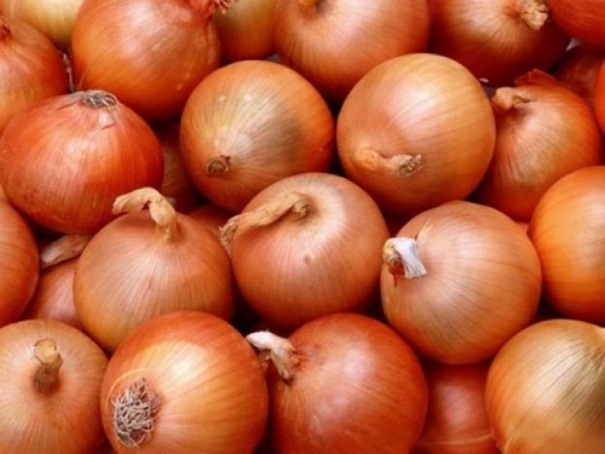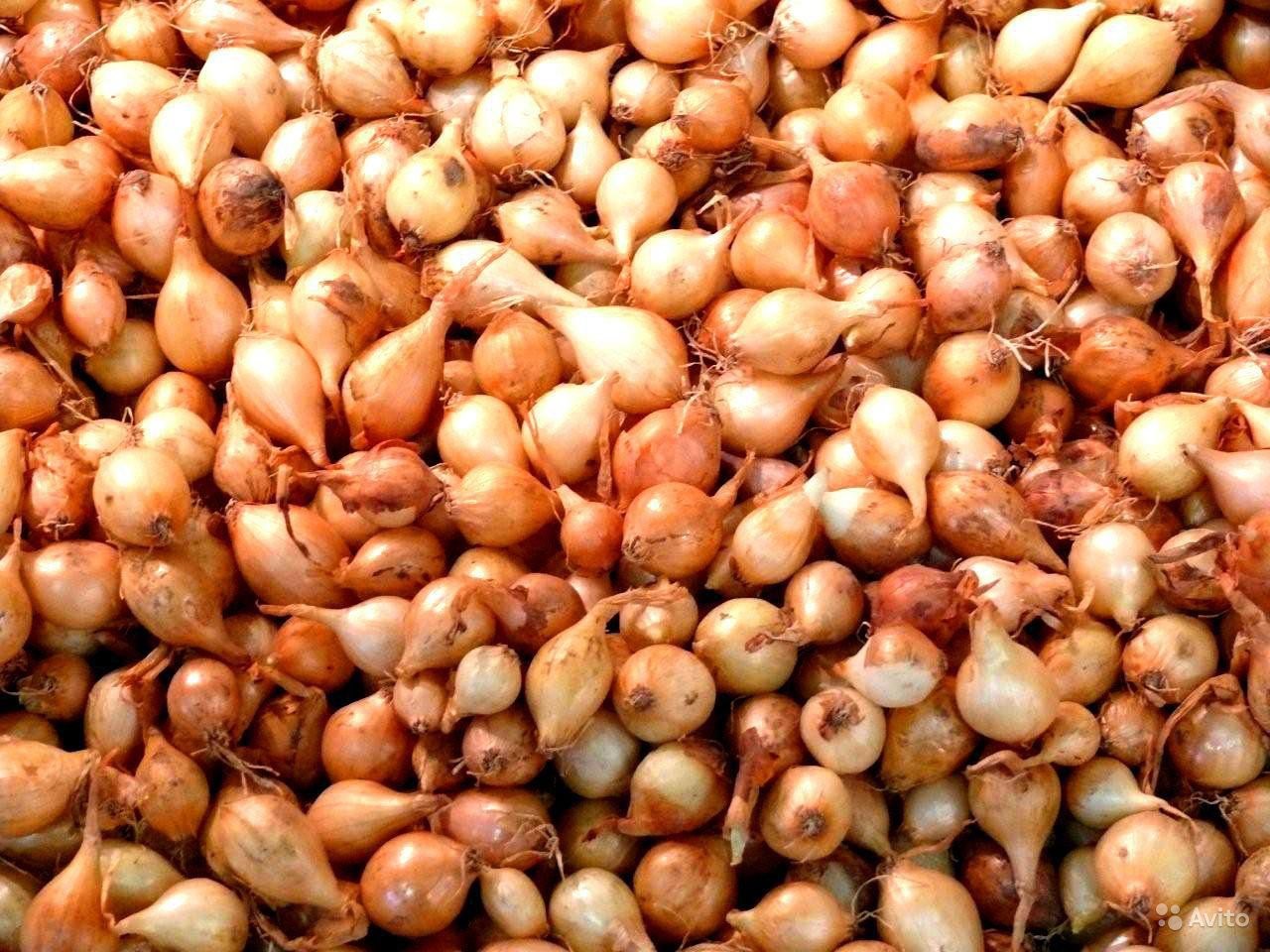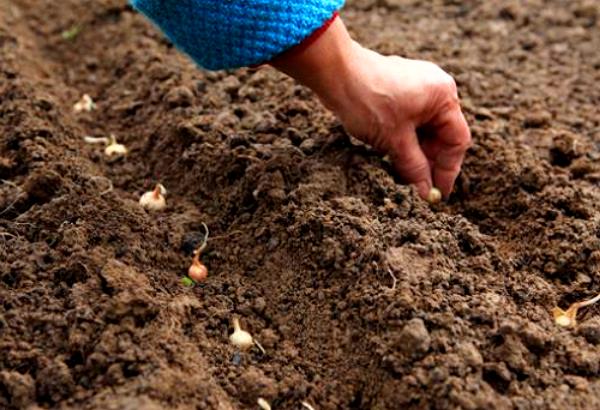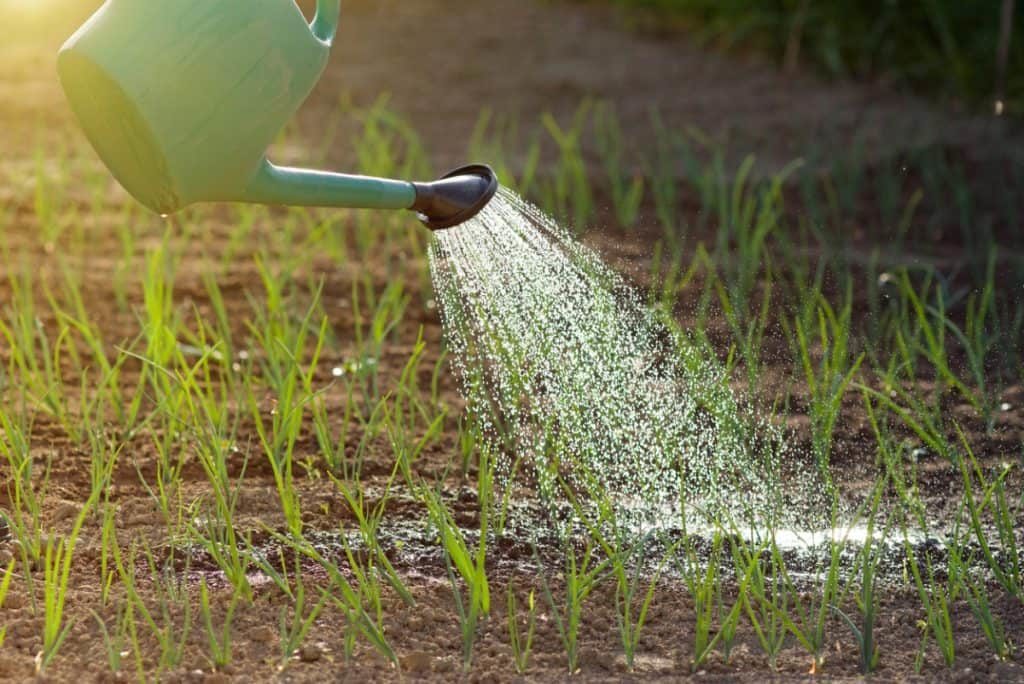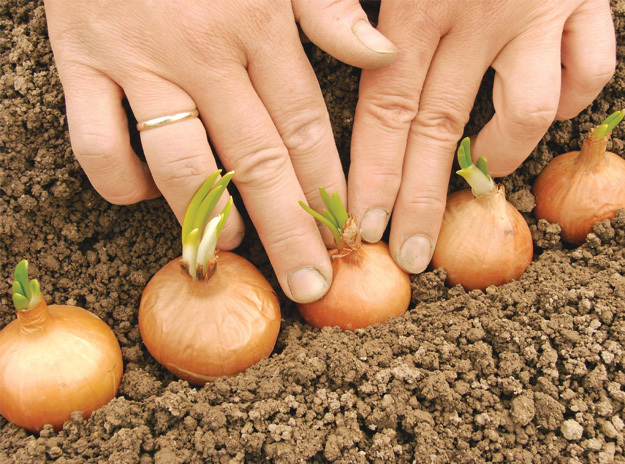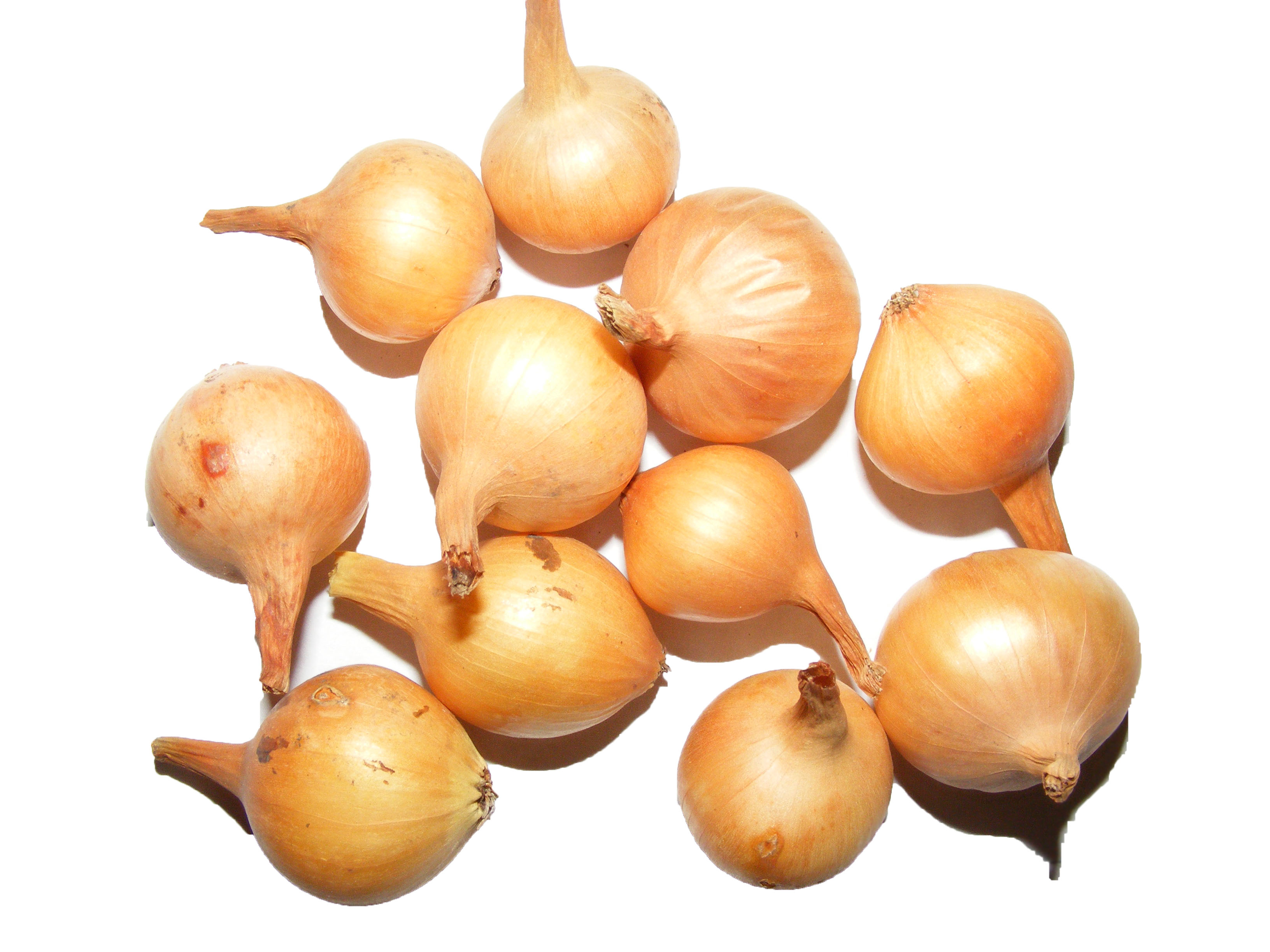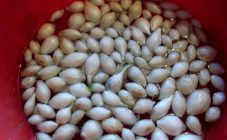Content:
The Strigunok onion was bred in 1943 in the Kursk region of the Russian Federation, therefore it is considered a local variety. In addition to Russia, this crop can be grown in Kazakhstan, Belarus and Moldova. This vegetable is widely used in cooking, it can be cooked and consumed fresh.
Strigunovsky onion: description and characteristics of the variety
A brief description of the Strigunovsky onion sevka:
- Onion variety Strigunovsky - a type of onion;
- It has from two to four nests for the maturation of planting material, this is the only disadvantage of this species (other varieties of this culture are multi-chamber, for example, Family onion);
- Refers to an early maturing species;
- You can grow both an annual crop from seeds and a two-year crop from seedlings;
- Shape - round, with edges stretched up and down;
- The nature of the structure is dense;
- The scales are yellow and dry (sometimes there is a light gray or pink color around the neck). The inside is white;
- The mass of one onion ranges from 45 to 80 grams;
- Differs in good maturation;
- It tolerates temperature changes well, quickly adapts to a new climate;
- The yield of a biennial plant is 3.5 kilograms per 1 sq. meter;
- It is stored for a long time, is not damaged during transportation, practically not one ailment does not take it;
- Doesn't require unnecessary care;
- Taste - onion, spicy;
- Propagated by seeds and seedlings.
Agricultural technology of cultivation
Soil preparation
It is necessary that the land plot is well lit. The soil must be completely ready for sowing by the end of April, the exact time cannot be established, much depends on the region and weather conditions. For this, preparation has been carried out since autumn. The soil is dug up, cleared of weeds and fertilized with compost or rotted cow dung.
Semen preparation
Growing seeds outdoors takes a long time. To speed up the germination process, they are prepared in advance. The process includes the following manipulations:
- four days before planting, the seeds are poured into a saucer and filled with room water for soaking;
- then they are poured into a special bag up to half, tightly tied and again lowered into the water for thirty to thirty five hours (the water must be changed 4 times during this time);
- swollen seeds are scattered onto a damp cloth in a thin layer and covered with the same cloth on top;
- the raw material is left for several days in a warm place, sprouts will hatch on the third day.
Self-collected planting material must be disinfected with fungicidal preparations. As a treatment against parasites, you can use a solution of potassium permanganate. Then the raw material is heated for about half an hour in an oven at a temperature of 50 degrees. At the end, the seeds are kept in aloe juice for forty minutes. Nigella is dried to acquire a free-flowing consistency and mixed with chalk, this will allow you to better see it in the soil.
Preparation of onion sets
The seedlings are moved, divided by shape and size. The rotten sevok is thrown away.
For three days, the onion heads warm up.If they were kept at home, then this is not necessary. In case of refusal to warm up, the vegetable will quickly shoot arrows, the harvest will be small.
After warming up, the seedlings are soaked in a complex solution (a tablespoon of any agricultural fertilizer per 10 liters of water). The procedure lasts 10 hours. Now the bulbs are dipped into another solution, for its preparation you will need a bucket of water and a small spoonful of copper sulfate. The seedlings are soaked for 15 minutes. The heads are thoroughly washed at the end of the procedure.
Landing
The first method is planting seeds (carried out at the end of April).
Nigella is laid out in the ground in a tape manner, the distance between the holes is 1 cm, the depth is 2-3 centimeters. The seed is compacted and covered with soil to remove the air gap. Now the soil is mulched with peat, watered and covered with a film until the first greenery appears.
Planting onion sets in open ground
The second option is bulb sowing. Sowing is carried out in warm winter or early spring (soil temperature is not lower than 12 degrees). Sow the bulbs in a one-line method. The distance between the rows is 40 centimeters, between the grooves - from 4 to 6 cm. The depth of the hole depends on the shape and size of the set. The main thing is that the tip sticks out slightly from the ground.
The first shoots appear on the ninth, maximum twelfth day. Weeds and soil crusting must be constantly eliminated. Loosening of the soil is carried out carefully, superficially, no more than 10 centimeters in depth, otherwise the roots of the head can be damaged.
To learn more about the planting rules and features of this bow, you can study the research project, where everything is detailed.
Care
This includes:
- watering;
- loosening, thinning and weeding;
- feeding with minerals.
Watering
The procedure is performed once or twice a week, if the ground is dry and there has been no rain. This irrigation procedure is carried out only during the growing season, which lasts from May to June. When the vegetable is ripe, watering stops. After each watering, weeding is necessary, due to which the earth is saturated with oxygen and weeds will be eliminated.
Thinning
When the first leaves appear, the first thinning is carried out. If the distance between the holes is less than two centimeters, the extra bow is pulled out. The next time the same manipulation is carried out after the formation of the 4th leaf, now the distance between the grooves is from 4 to 6 cm.
Top dressing
A solution made from urea is ideal as a fertilizer. To prepare it, you will need 10 liters of water and 25 grams of the product. The finished fertilizer is poured under the root system, 10 liters are distributed over no more than 10 running meters.
The second stage of soil fertilization is performed at the end of June, about three weeks after the first fertilization. In this case, potassium and phosphate compounds are used. The proportion is 13 grams of potassium per 30 grams of phosphate.
Harvesting
The ripening phase is determined by the foliage. When it turns yellow and sinks to the ground, it means that the bulb is fully ripe. Harvested in dry weather. After being removed from the soil, the vegetable is stored and dried under a canopy for ten days.
Advantages and disadvantages of the variety
Positive sides:
- good fruiting;
- unpretentiousness to the climate: it grows in both hot and cool weather;
- fast maturation;
- the composition allows you to cure many diseases;
- successfully used in cooking;
- not amenable to disease.
So, Strigunovsky onion sevok is a suitable species for growing in gardens. It requires little maintenance and produces an excellent harvest.
